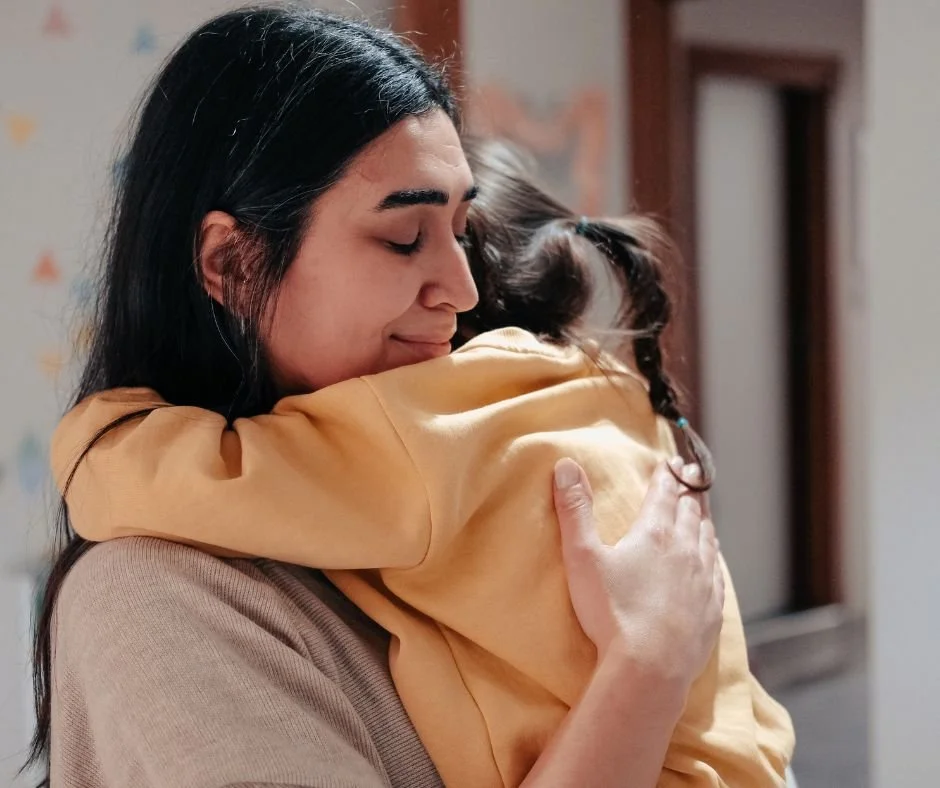Riding the Wave: What to Do During (and After) a Toddler Tantrum
The shoes are on the wrong feet.
The toast is cut into squares, not triangles.
Or bedtime arrives and suddenly your toddler is on the floor, thrashing like their world has ended.
Tantrums arrive fast and fierce. One second you’re fine, the next you’re in the middle of a storm.
And in that moment, you might think: “I need to stop this. I need to make it go away.”
We all have.
But here’s the truth: a tantrum isn’t something to fix. It’s a wave of emotion crashing through your child. And just like you can’t reason with the sea, you can’t reason with a toddler mid-wave.
And no sticker chart or Supernanny tip really prepares you for that.
If that feels familiar, you might also like When Toddler Emotions Feel Too Big (and What Really Helps)
Why you can’t reason in the middle of a storm
When a tantrum hits, your toddler’s thinking brain - the part that handles logic and reason - is offline.
Their emotional brain has taken over, and it’s running on pure overwhelm.
That’s why “Calm down,” “Stop crying,” or “If you don’t stop, there’ll be no…” rarely helps. It’s not that your child won’t listen - they literally can’t.
So instead of trying to shrink the wave, your job is to anchor yourself and them until it passes.
In the moment, that might look like:
Staying close, even if they can’t accept a cuddle.
Using fewer words, and keeping your tone soft.
Offering safety through presence, not persuasion.
You can’t control the tide. But you can show your toddler it’s safe to come out the other side.
For more on why calm connection matters more than correction, read Gentle Parenting Through Tantrums: Why Your Child’s Meltdown Doesn’t Mean You’ve Failed
After the wave: reconnect and guide
When the storm passes, your toddler may be clingy, tearful, or even quiet. This is your chance to reconnect.
Reconnect tells your child: “Even when things get messy, I’m still here. We’re okay.”
That might sound like:
“That was really hard for you.”
“You were so upset, and I stayed.”
“I love you. We’re okay now.”
And if your toddler is old enough, you can begin to gently explore the feelings together. Not a lecture - just naming the emotion and suggesting what might help next time.
“You were so cross when the tower fell. Next time we could stomp our feet, or ask me for help.”
“It felt unfair when it was time to leave. Maybe next time we can say goodbye together.”
This is how toddlers slowly build their own toolbox for handling big feelings: first with your presence, then with your words, and eventually with their own strategies.
When it’s you who loses it: rupture and repair
Sometimes, it’s not just your toddler who gets swept up by the wave. Maybe you snap, raise your voice, or walk away in frustration. The guilt afterwards can feel heavy.
But this is where rupture and repair comes in.
Rupture is the moment of disconnection - when you and your child feel out of sync.
Repair is the coming back together.
And it’s the repair that matters most. Because when you say,
“I was cross before. I’m sorry.”
“That was hard for both of us. Let’s try again.”
…you’re modelling one of life’s most powerful lessons: that relationships can withstand hard moments, and love doesn’t disappear when tempers flare.
If bedtime often brings another emotional wave, you might find Why Connection Is the Bedrock of Better Baby Sleep a helpful read.
The bigger picture
Tantrums are tough. They can leave you rattled, embarrassed, or drained. But they’re not proof of bad behaviour - they’re waves of emotion your toddler isn’t ready to handle alone.
Your role isn’t to stop the wave. It’s to ride it with them, reconnect afterwards, and if needed, show how repair works when you’ve been swept away too.
And if you’d like more scripts, tools, and a clear framework for responding to tantrums, bedtime battles, transitions, and all the other big-emotion moments - that’s exactly what my new course Parenting Toddlers with Big Emotions is here for.
Everything you need to feel calmer, more confident, and more connected as you guide your toddler through these messy, beautiful years.
Only available at this special launch price of £27 until 16th October



